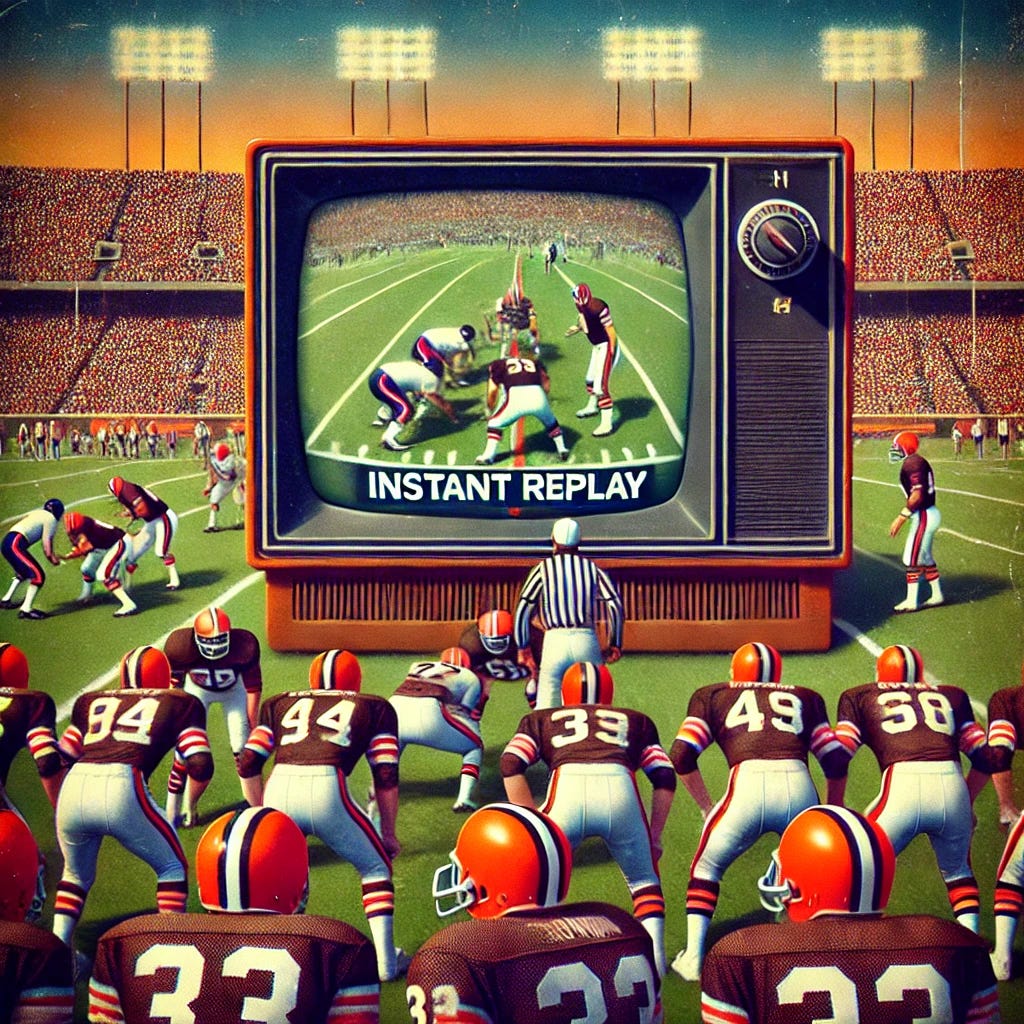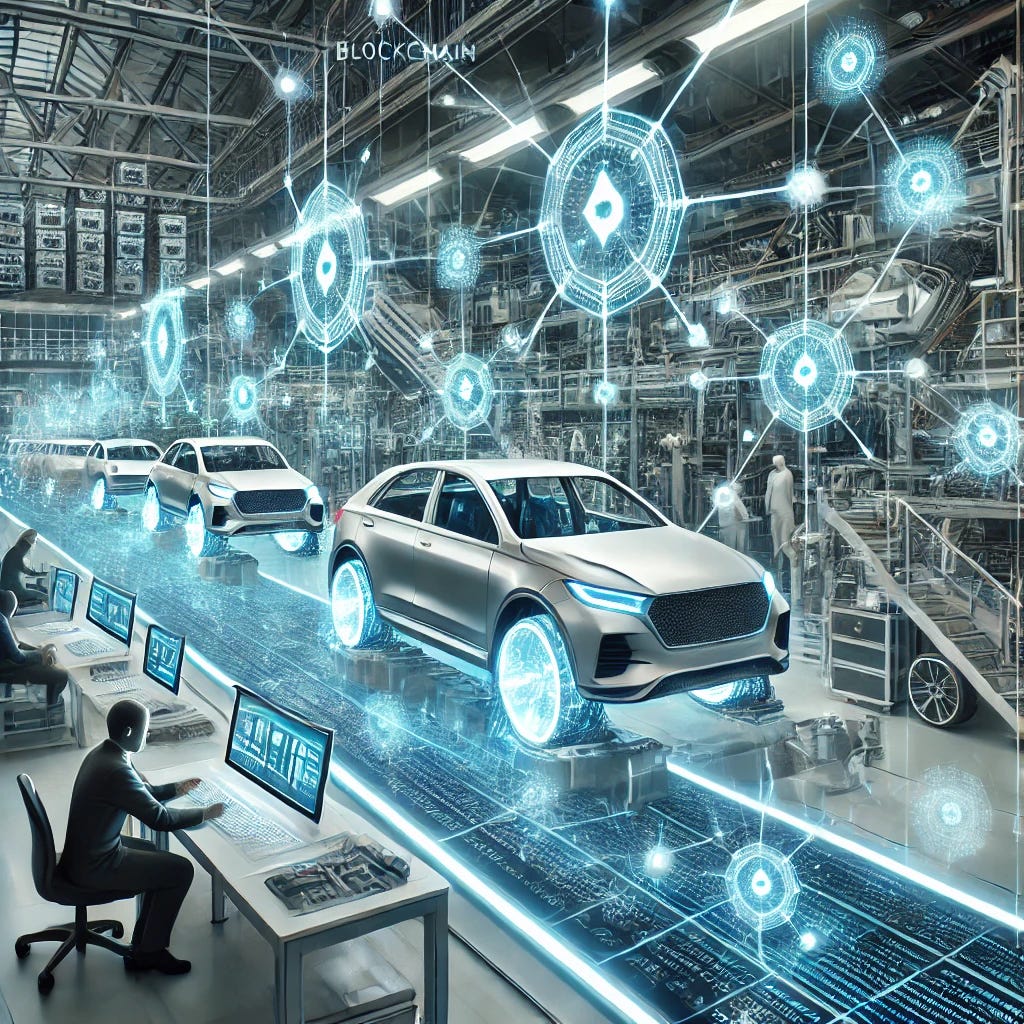The First Chapter -- Millions on the Move
The Next Steps of Blockchain in the Automotive Industry
Editor’s Note: Jim wants the community to tell the story of blockchain's future. Will you help tell the story and the next chapters? If you’re interested in contributing, reach out. His email is below.
Chapter 1: An Introduction to Blockchain in the Automotive Industry
Overview of blockchain technology.
Potential impacts on the automotive industry.
In the ever-evolving landscape of technology, the automotive industry stands at the forefront of a significant transformation; however, as typical technological advances go, the industry—save for Tesla—often stands 10 years behind the times.
The blockchain transformation is not just about the latest models or features but a foundational change in how the industry operates, integrates, communicates, and grows. At the heart of this change is a technology known as blockchain. Known for its association with cryptocurrencies like Bitcoin, blockchain has evolved into a tool with far-reaching implications, particularly for industries like automotive that thrive on innovation and efficiency and survive without trust.
In its simplest form, blockchain technology is a decentralized ledger that records transactions across multiple computers. This setup ensures that each entry is secure, transparent, and immutable. The true genesis of blockchain technology can be traced back to 2008 when Satoshi Nakamoto released his groundbreaking paper entitled “Bitcoin: A Peer-to-Peer Electronic Cash System,” introducing the concept of a decentralized digital currency. Nakamoto's innovation wasn't just in creating a new form of digital currency but in solving a longstanding problem of digital transactions: the double-entry bookkeeping problem.
Yes, it's an accounting issue.
Often termed 'Web 3.0', blockchain extends beyond digital currencies. It represents a new era of the internet that transcends the exchange of information to facilitate the exchange of value. This is particularly relevant for industries like ours, where the flow of value, information, and trust is lacking. The immutable ledgers of blockchain ensure that every transaction, exchange, and agreement is recorded securely and transparently. This could revolutionize how vehicles are bought and sold, manufactured and maintained, and even communicate with each other and their environment during use.
Imagine a world where every vehicle's history—from its manufacturing date to its service records, from its ownership history to its participation in incidents—is recorded transparently and immutably, like a marriage, for better or worse.
Blockchain holds this promise for the automotive industry: a world with more efficient and secure supply chains, accurate and trustworthy vehicle histories, and smooth and transparent transactions. This technology could enable operational transparency and efficiency previously unattainable in the automotive sector. Not to mention the cash flow implications as working capital becomes unlocked.
The automotive industry is known for its competitiveness, innovation, and continuous push towards efficiency. Blockchain's transparency and security align well with these characteristics. However, the blockchain foundation of Decentralization may be the most challenging obstacle to overcome.
Integrating blockchain could enhance supply chain management, improve customer trust, and streamline operations for automobile companies (read: OEMs and retail automotive publicly traded companies). This synergy between blockchain's capabilities and the automotive industry's needs could herald a new age of operational efficiencies that will drive profitability.
In today's business world, operational transparency may be a cliche and avoided by many; however, manufacturers, dealers, buyers, governments, and regulators seek it at different times for different reasons. The gap in today’s automotive industry is enormous.
To understand the potential impact of blockchain on the automotive industry, one can draw a parallel with the introduction of video replay technology in sports.
Believe it or not, the concept of video replay dates back to an Army-Navy football game in 1963, marking an inception point for a technology that would take decades to become the staple in sports it now is.
The first use of instant replay in the NFL was in 1986, during Week 1 between the Cleveland Browns and the Chicago Bears. The multi-year gap between the technology's inception and utilization in all significant sports mirrors the blockchain journey since Nakamoto's 2008 whitepaper. Given this parallel and considering the accelerated pace of technological adoption today, I suspect we are already participating in a leap in blockchain usage that will significantly impact automotive by no later than 2030.
Those who recently watched Bitcoin climb past the $100,000 mark might be surprised to learn that it passed the $100 mark in 2013. For those keeping score at home, that’s 100x in approximately ten years.
However, the journey of blockchain, much like that of video replay technology, has its challenges. The blockchain world has seen its share of negative examples, highlighted by figures like Sam Bankman-Fried and entities like Alameda and FTX. These cases underline the importance of ethical practices, robust technology, and the need for continuous innovation and improvement. The automotive industry can learn from these examples as it embraces blockchain technology. Just as the sports world learned to refine and improve video replay technology, the automotive industry can learn to harness the power of blockchain.
Looking forward, the integration of blockchain into the automotive industry opens up a plethora of opportunities. For Original Equipment Manufacturers (OEMs), automotive retailers, and consumers, blockchain offers improved supply chain management, enhanced customer experiences, and a new level of transparency. However, this journey is not without its challenges. The industry must navigate technological hurdles, develop industry-wide standards, and ensure blockchain integration benefits equitably without significant detriments to competitors or consumer privacy.
As we embark on this journey of integrating blockchain technology into the automotive industry, it's important to remember that this isn't only about profit and efficiency. It's about building a more transparent and sustainable ecosystem. It's about creating a world where the automotive industry operates not just for the benefit of a few but for the betterment of most.
I’m noting that portions of this book, including the cover and this chapter, have been enhanced by AI as I commit to harnessing the latest technologies in the name of scale and progress. As I’ve often said, calculators didn’t put the accountants who used them out of business. But the ones who didn’t use calculators—that’s quite a different story.
Just as there are challenges today in applying video replay, using artificial intelligence, and even at one point in using the Internet, there will also be challenges in adopting blockchain.
But can we say we are worse off for these advancements? The answer, as history shows, is a resounding no. As we move forward, these challenges will drive us to innovate and improve, just as they have done in the past.
jim@localsearchgroup.com







